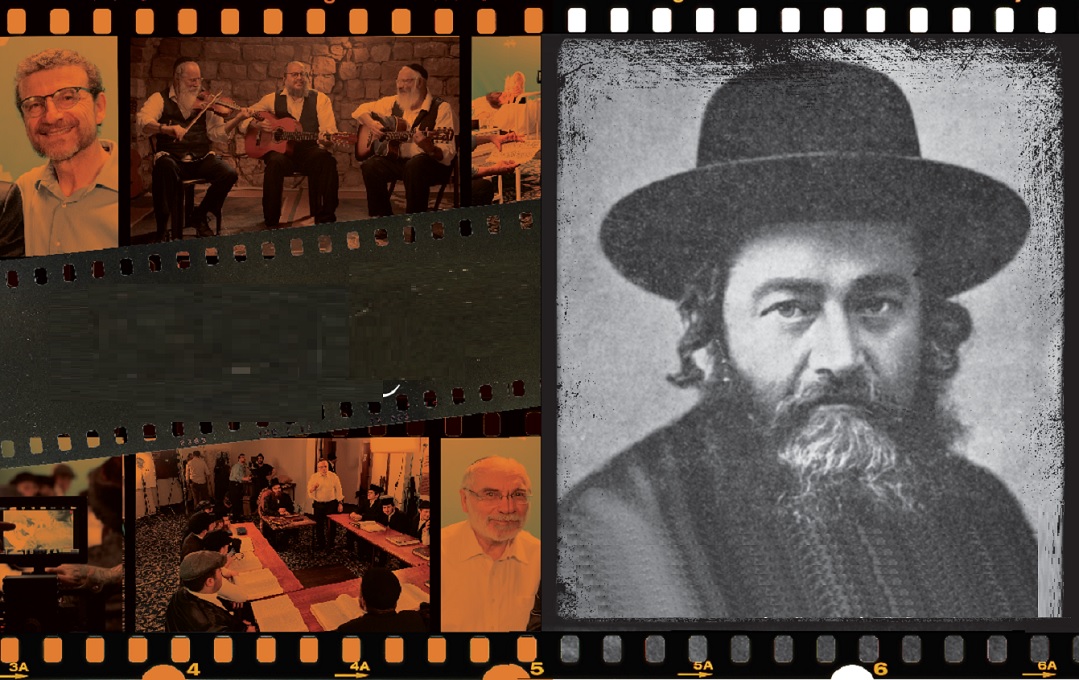Filmed for the Future

A new documentary casts a vivid light on Rav Meir Shapiro

Seforim-lined, air-conditioned batei medrash and bochurim who know they can count on meals and a bed are the contemporary norms in today’s yeshivah world,
but not so long ago, these were unimaginable images. In the days when Daf Yomi founder Rav Meir Shapiro ztz”l decided to create his trailblazing Yeshivas Chachmei Lublin, young bochurim on the Polish landscape with mesirus nefesh for Torah learning would eat their meals humiliatingly at the homes of hosts who often could barely feed their own families, and sleep on shul benches or in factories as night watchmen.
What was Rav Meir Shapiro’s secret for forging ahead against the tide? How did he build a yeshivah that would give proper kavod to students and their Torah learning, despite all the naysayers? How did he create an enduring, worldwide learning program many thought impossible, nearly becoming but a vague memory during the Holocaust but then renewing itself to unify hundreds of thousands of Jews around the world? While Rav Meir’s short life (he passed away in 1933 from a throat infection, probably diphtheria, at age 46) was fraught with challenges from a young age, this extraordinary man was driven to change the face of world Jewry and establish Torah supremacy — and always with emunah, wit, and unbridled joy.
And now, so many previously hidden aspects of his life have been revealed in a just-released documentary entitled Only with Joy. This new video project of Better World Productions, which transports the viewer to prewar Poland, was the brainchild of Brooklyn-based Orthodox documentary filmmaker Menachem Daum, whom readers might remember as the creator of the breakthrough 1997 PBS documentary A Life Apart: Hasidism in America, which opened a window for the wider American public into chassidic life. In this newest production though, his target audience is no longer the secular outsiders, but Rav Meir Shapiro’s own spiritual inheritors who are ready for a sophisticated, professionally-produced glimpse into the life of this Torah giant.
“About 25 years ago, shortly before I finished A Life Apart, I got interested in making a film about Rav Meir Shapiro,” says Daum, a gerontologist by profession with a Ph.D. in Education who served for many years as research director of the Brookdale Center on Aging at Hunter College. Around that time, he picked up a copy of the book A Blaze in the Darkening Gloom, a Feldheim-produced biography of Rav Meir Shapiro based on a Yiddish manuscript written in 1934 by a talmid, Yehoshua Baumol, who was killed in the Holocaust. Daum is not only an avid reader of pre-war Eastern European history, he’s traveled within the region numerous times.
“A part of me lives in prewar Europe,” says Daum, who was born in a DP camp in Germany after the war, to Polish Holocaust survivors. Referring to the legacies left there by the great Jews of the past, he says, “the sparks are still in the air.” After reading Baumol’s book, Daum felt driven to locate Rav Meir’s surviving talmidim to learn firsthand about this remarkable man. Aided by his sons, he tracked down and filmed interviews with eight talmidim — by then elderly rabbanim — in America and Israel and captured their memories on film as they described their lives as students of Yeshivas Chachmei Lublin.
The process became something of a family effort. “I didn’t have a budget to get another film off the ground at the time, so I enlisted my sons to conduct many of the interviews while I operated the camera. My son Akiva, who was then studying in the Mir in Jerusalem, conducted the earliest interviews in the mid-’90s. My son Tzvi Dovid did the more recent interviews with contemporary historians and rabbanim.” Tzvi Dovid Daum also invested in researching documents, articles and anything else he could find about Rav Meir and Yeshivas Chachmei Lublin.
About a year and a half ago, Menachem Daum contacted filmmaker David Lenik with the material he’d accrued. “He approached me with an amazing collection of interviews that he had the foresight to record back in the ’90s,” says Lenik, “and I quickly realized that what I was looking at was a treasure chest of information that could inspire all of us.”

Filmmakers David Lenik (L) and Menachem Daum came with different skill sets but one goal.“I don’t think either of us could have made a better film on our own"
Oops! We could not locate your form.













